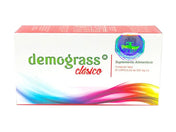
Glucosamine: Prevention against Osteoarthritis
Joint health is essential for maintaining an active and fulfilling lifestyle. Osteoarthritis, one of the most common forms of arthritis , affects millions of people worldwide. In the search for preventative methods and natural solutions, glucosamine has emerged as a key joint care supplement. In this blog, we'll further explore glucosamine's role in osteoarthritis prevention, its potential benefits, and how it can be effectively integrated into a comprehensive approach to joint health.
What is Osteoarthritis and Why is It Important to Prevent It?
Osteoarthritis is a degenerative joint disease that primarily affects cartilage, the tissue that lines the joint surfaces. As the cartilage wears away, bones can rub against each other, causing pain, inflammation, and loss of mobility. Preventing osteoarthritis is critical, as it not only affects quality of life but can also lead to long-term disabilities.
Glucosamine as an Ally in Prevention:
Glucosamine is a natural compound found in the body, specifically in joint cartilage. It functions as a precursor to molecules that make up connective tissues, including cartilage. As we age, glucosamine production tends to decline, which can contribute to cartilage wear and increase the risk of osteoarthritis. Glucosamine supplementation has become a prominent approach to strengthening joints and preventing the development of the disease.
Potential Benefits of Glucosamine:
-
Stimulates Cartilage Production: Glucosamine is essential for the formation and repair of joint cartilage. By taking glucosamine supplements, you provide your body with an additional boost of this important structural component, helping to maintain joint integrity.
-
Anti-inflammatory Properties: Glucosamine has been suggested to have anti-inflammatory properties, which may help reduce joint inflammation, a key factor in the development and progression of osteoarthritis.
-
Pain Relief: Many people suffering from osteoarthritis experience joint pain. Glucosamine has been shown in some studies to have analgesic effects, providing relief from the pain associated with the condition.
-
Improves Joint Function: By strengthening cartilage and reducing inflammation, glucosamine may improve joint function, allowing for greater range of motion and a better quality of life.
- Joint Wear Prevention: Glucosamine helps protect against joint wear and tear by providing the building blocks needed to maintain proper joint structure and function.
[product=glucosamine-3-in-1-reinforced-with-garlic]
100% natural anti-inflammatory, analgesic and anti-rheumatic food supplement.
[/product]
Types of Glucosamine:
There are several types of glucosamine, the two most common being glucosamine sulfate and glucosamine HCl (hydrochloride). Both forms have shown benefits in studies, but some people may find one more effective than the other. It's important to consult a healthcare professional before choosing a specific type of glucosamine supplement.
How to Integrate Glucosamine into a Comprehensive Approach to Joint Health:
-
Consult with a Healthcare Professional: Before starting any supplementation, it's crucial to speak with a doctor or healthcare professional. They can evaluate your specific situation and medical history and provide personalized recommendations.
-
Regular Exercise: Complement your supplementation with a proper exercise routine. Exercise strengthens the muscles around your joints and contributes to overall joint health.
-
Balanced Diet: Maintain a diet rich in foods that promote joint health, such as fish rich in omega-3 fatty acids, antioxidant fruits and vegetables, and foods with anti-inflammatory properties.
-
Maintain a Healthy Weight: Excess weight can increase stress on your joints, especially those in your legs and back. Maintaining a healthy weight helps prevent osteoarthritis.
- Symptom Monitoring: While glucosamine can be beneficial for many people, it is important to monitor symptoms and adjust the dose or approach as needed.
Glucosamine has become an important ally in the prevention of osteoarthritis, offering benefits ranging from stimulating cartilage production to providing pain relief and improving joint function.























































